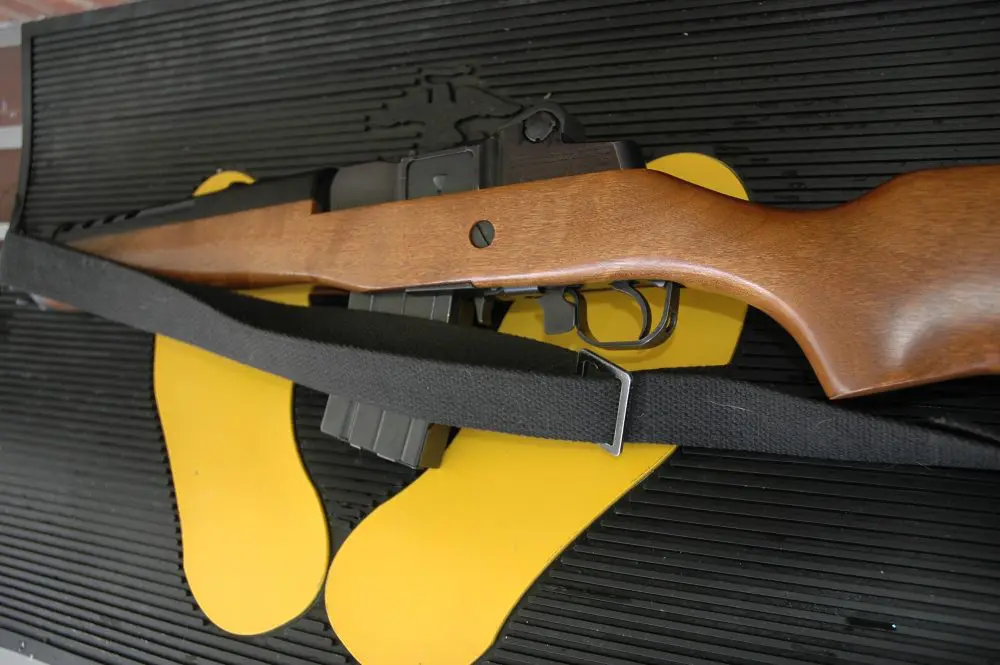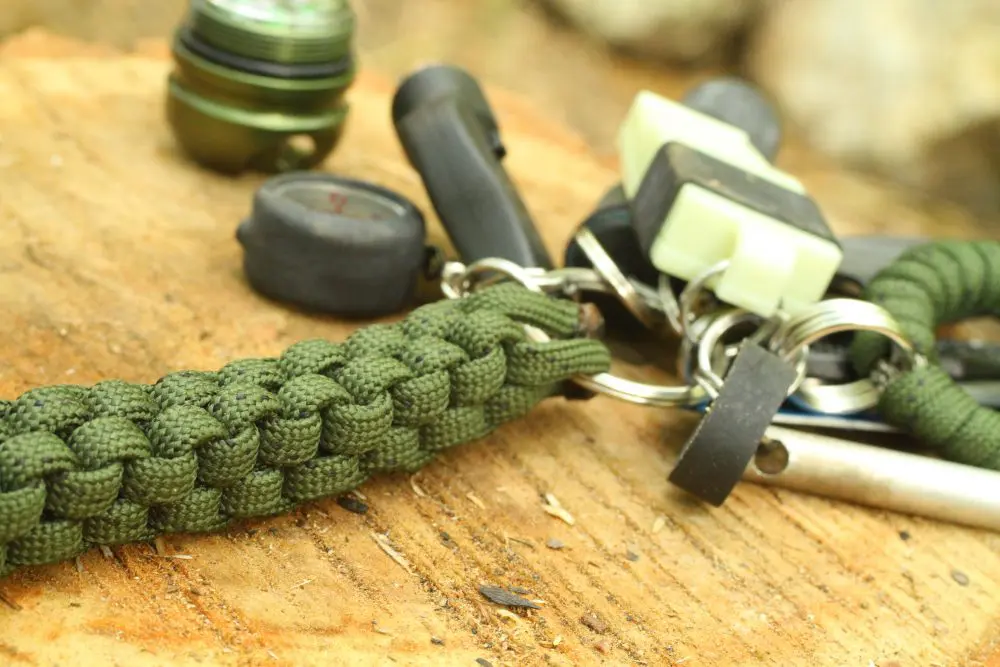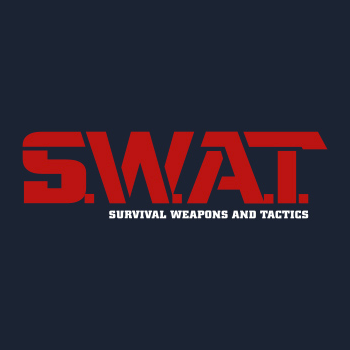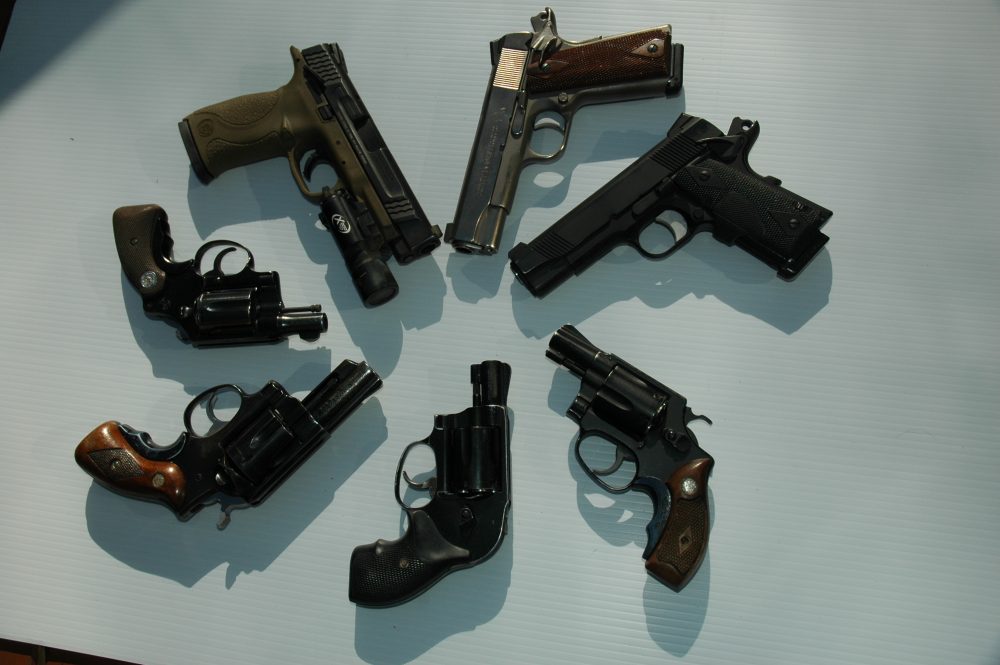Last summer I joined a select group of gun scribes and industry professionals for a three-day special event at Gunsite. Organized by Gunsite and Dick Williams, the theme was “The Great .45 Festival.” Day One focused on semiautomatic pistols, Day Two on double-action (D/A) revolvers, and Day Three on single-action (S/A) revolvers.
Table of Contents
WHAT I CARRIED
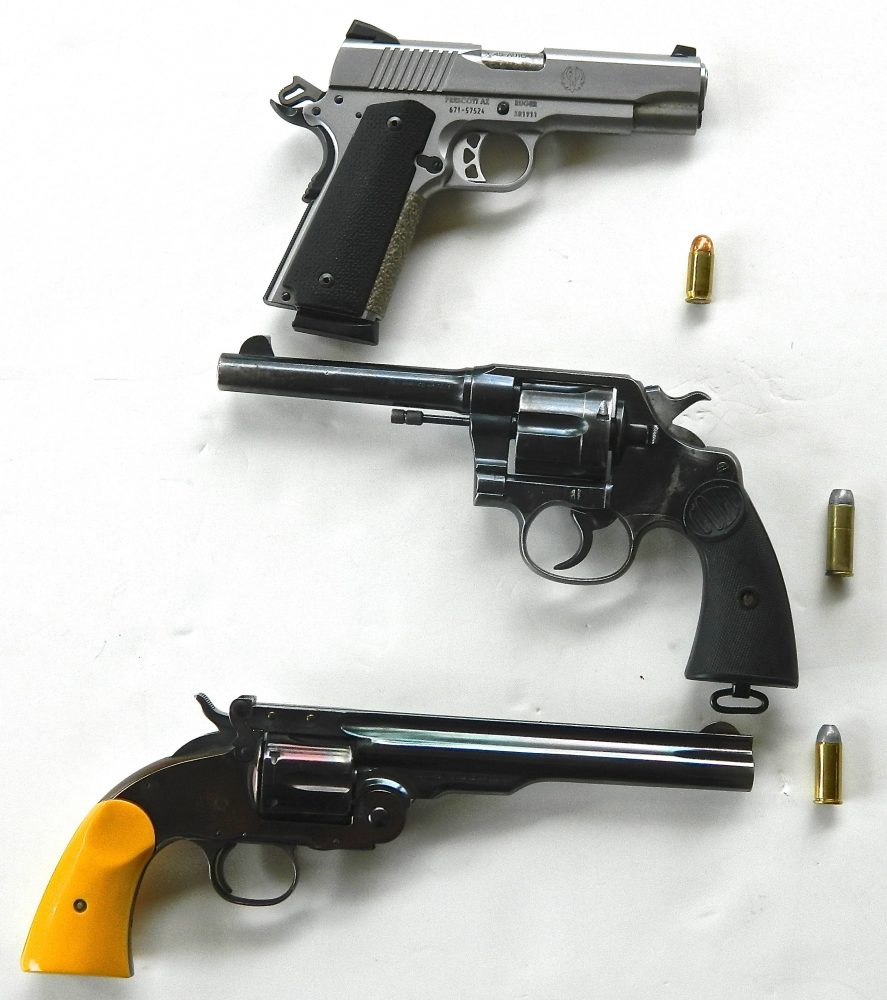
My choice for the self-loader was easy—a 1911, my Ruger Commander with Raven Concealment Systems holster and mag pouch.
I decided to go old school with the wheelguns.
For the D/A, I took my Colt New Service chambered for .45 Colt. A check on Colt’s database shows this particular revolver was made in 1907. I carried it in a Simply Rugged Holsters 120 holster on a Simply Rugged 1¾-inch laminated belt with two Simply Rugged six-round cartridge slides.
My choice for the single-action was my Schofield revolver. Outside of books and movies, many of the participants had never seen a Schofield. Instructors Ken Campbell and Steve Tarani both remarked that this was the first time in all their years of instructing that they’d seen one in a class.
I carried the old break-top in a Ross Leather Classic holster on a Ross three-inch lined cartridge belt. I wore the buckle to the rear, placing the cartridge loops up front for easier access—a tip I picked up from looking at old photos of Western lawmen, most notably the Arizona and Texas Rangers.
All ammo—.45 ACP, .45 Colt, and .45 Schofield—was made by Black Hills Ammunition.
TRAINING DAY ONE
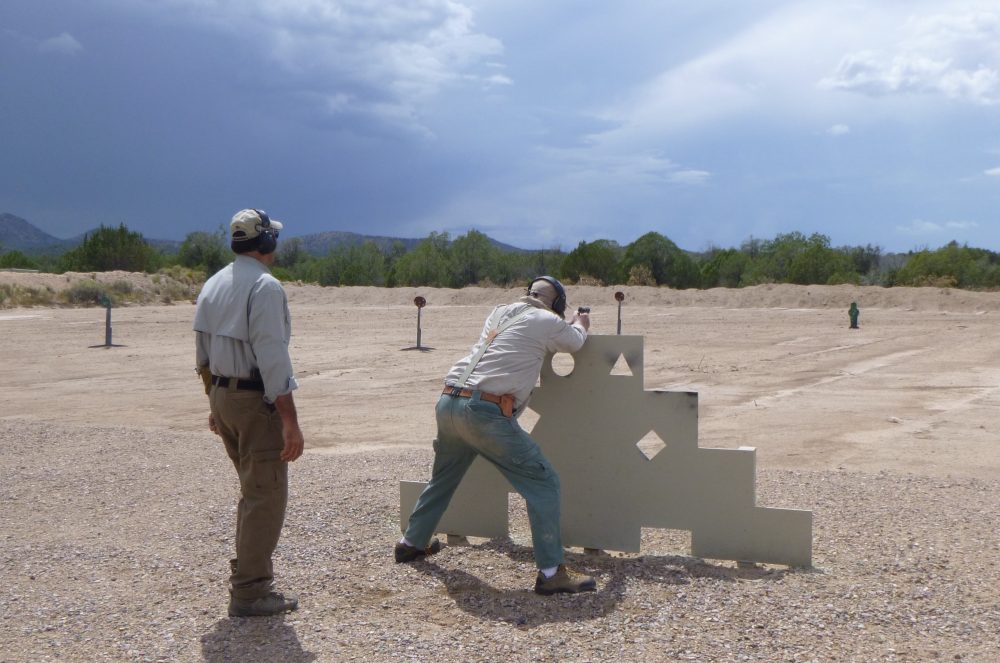
This day served as a warm-up on the square range, with Ken Campbell covering range protocols and the drawstroke as taught by Gunsite.Campbell introduced a drill to the students that Louis Awerbuck used in many of his classes. As the student takes careful aim, another student acting as a coach presses the trigger. More often than not, this results in a one hole, five-round group from seven yards.
After lunch, Steve Tarani gave an excellent demonstration of defending against a knife attack and counterattacking with an edged weapon.
We ended the day by running the new Urban Scrambler course. This course is approximately 85 yards long with 15 steel targets that are engaged from field-expedient firing positons through simulated doors and windows, barricades, and a roof. The targets were roughly ten to 20 yards in from the shooting positions.
Although the targets were not especially difficult, the increased heart rate caused by moving quickly among the stages resulted in many misses by experienced shooters.
TRAINING DAY TWO
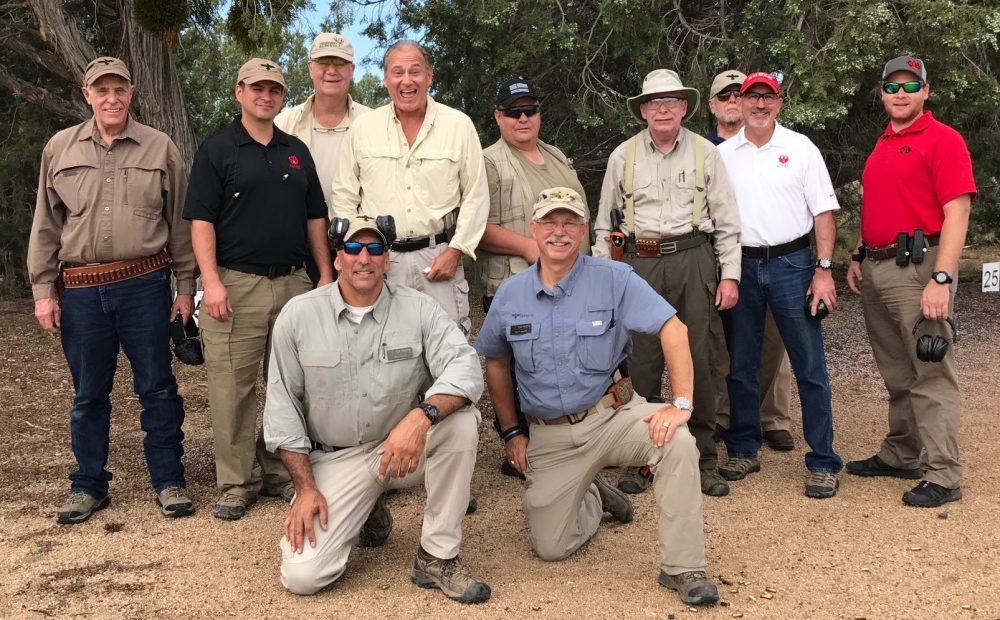
Day Two saw us back on the square range with double-action revolvers.The Colt New Service has the heaviest double-action trigger pull I have ever experienced with a revolver. Furthermore, the narrow rear notch sight and thin blade front sight are rudimentary at best. The rear notch allows very little light on either side.
A fellow student said he knew a gunsmith who could mill the frame, put on a modern rear sight, and replace the front sight as well. I thanked him but silently thought there was no way I would destroy a 110-year-old piece of American history.
In shooting the old Colt out to about 15 yards, I simply focused on the front sight and achieved center-mass hits.
The instructors gave students the option of shooting single rather than double-action back at 35 yards, but I fired double-action at all ranges. While more precise shots can definitely be made in S/A mode, it is my personal opinion that this is akin to training to fail, because under stress in a critical situation, a shooter will likely default to D/A mode.
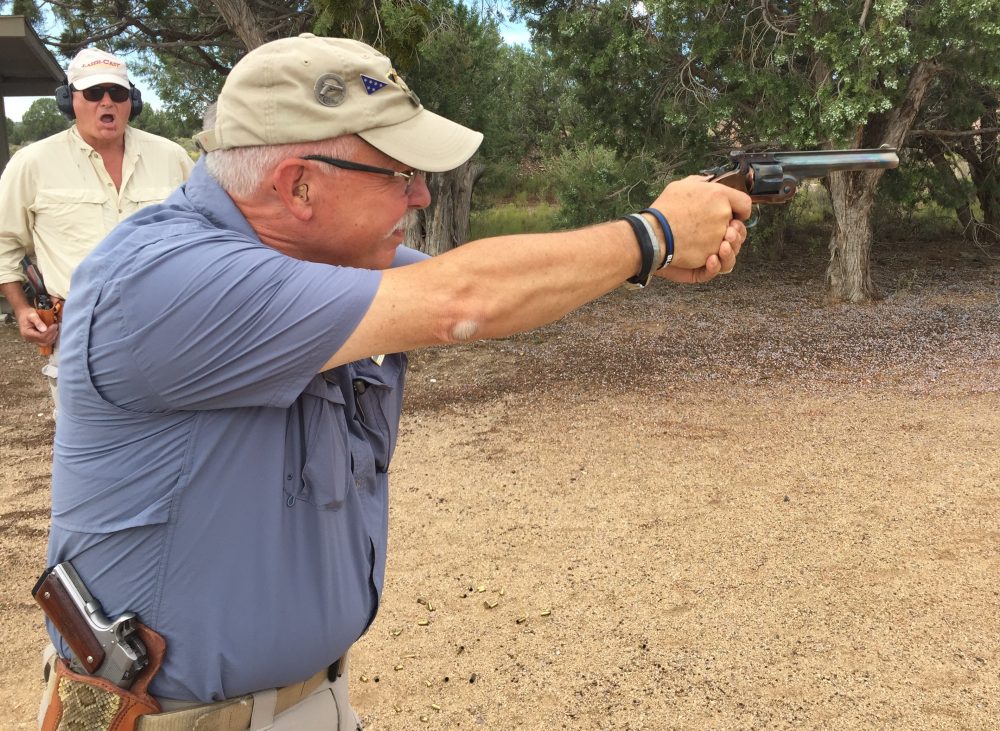
I held my own on the drills, but reloading was another kettle of fish. All other students were able to use speedloaders, or in some cases full-moon clips, both of which had not even been dreamed of when the New Service was made, forcing me to load from the loops in my cartridge slides.The most accepted method of loading a revolver is: After the empty cases are ejected, the revolver is held in the weak hand, while the strong hand acquires the reloads from the strong side. For economy of motion, this avoids having to reach across the body.
Another method shown to me years ago by Gunsite Rangemaster Giles Stock is to hold the revolver in the strong hand, while reloads are made with the weak hand with ammo carried on that side, again for economy of motion. As I had a cartridge slide on both the left and right sides, I used both methods.
In the afternoon, we fired the original Scrambler course. This required some improvised positions shooting at steel silhouettes and Pepper Poppers out to approximately 90 yards. With the slow, heavy .45 Colt loads, I held about neck level, resulting in center hits.
TRAINING DAY THREE
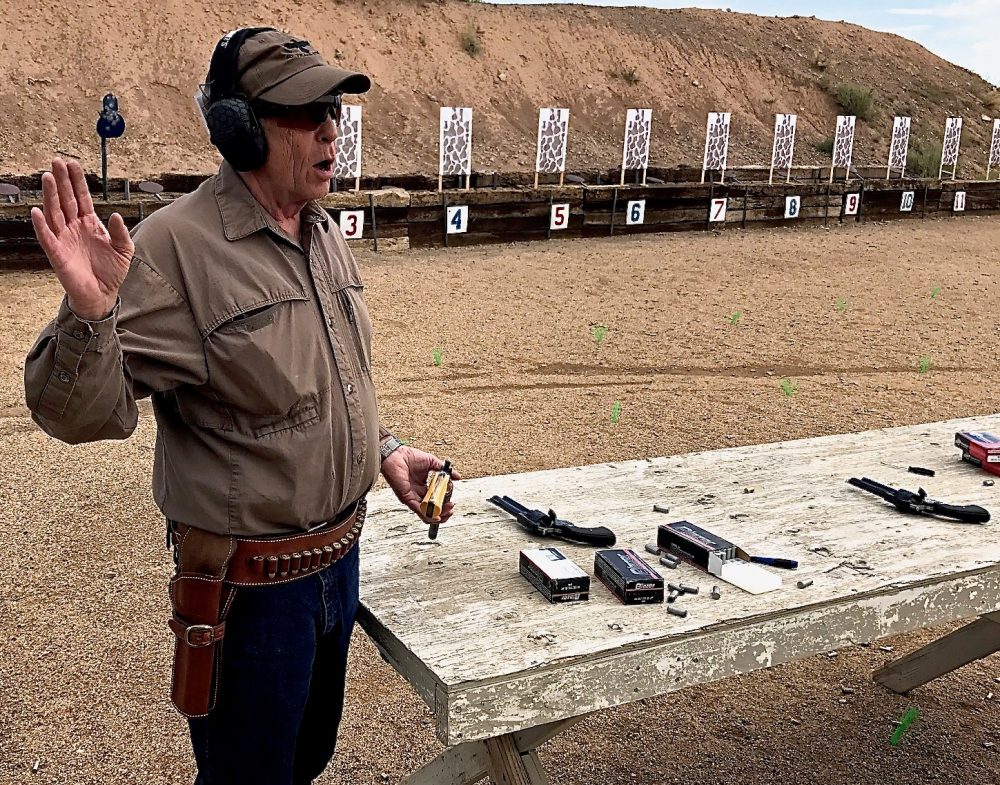
On the morning of the final day, tables were set up on the range and representatives from Ruger and STI set out handguns for the class to examine and shoot.At some fellow students’ request, I gave a short presentation on the Schofield. One of the main benefits of the top-break Schofield is that all empty cases are simultaneously ejected, while empties from other revolvers of the era had to be ejected one at a time.
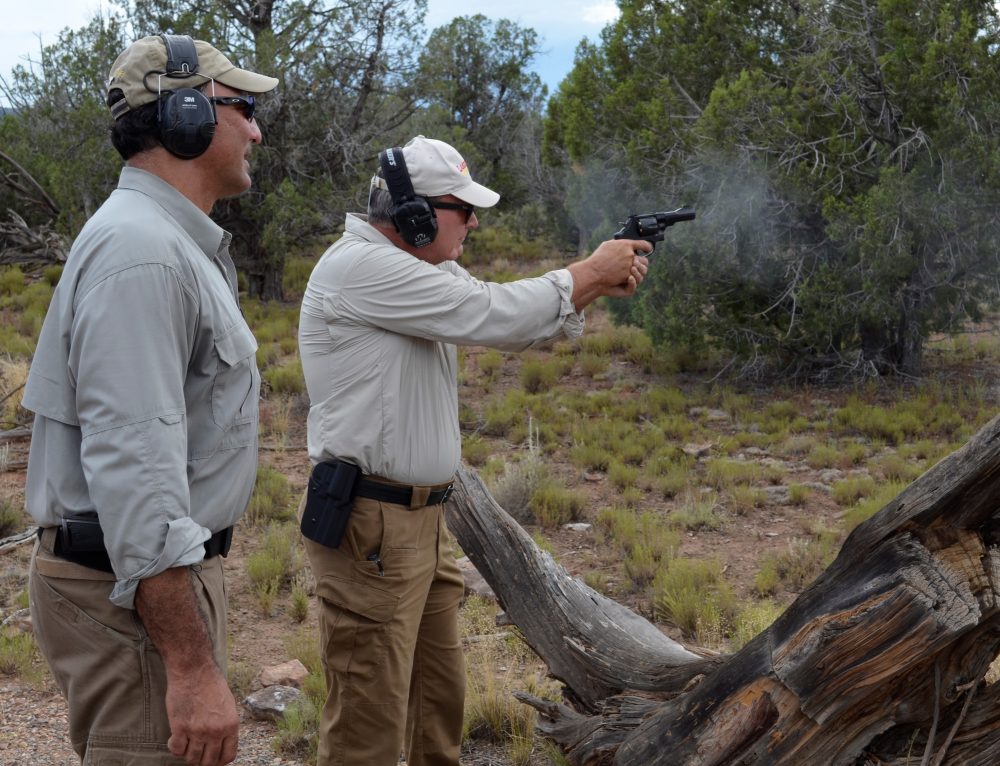
Although sometimes called .45 Long Colt, there is no such cartridge. The proper name is simply .45 Colt. Speculation holds that the former name may have originated by Army Ordnance as a way to tell the .45 Colt from the .45 Schofield cartridges, as both were in use at the same time.The shorter Schofield round can be used in a .45 Colt, but not the other way around, in the same fashion as the .38 Special can be used in a .357 Magnum, but the .357 Magnum will not chamber in a .38 Special.
After the tables were removed, we got back to training. With the exception of my Schofield and one Colt Single Action Army, all shooters were now armed with Ruger Blackhawks and Vaqueros.
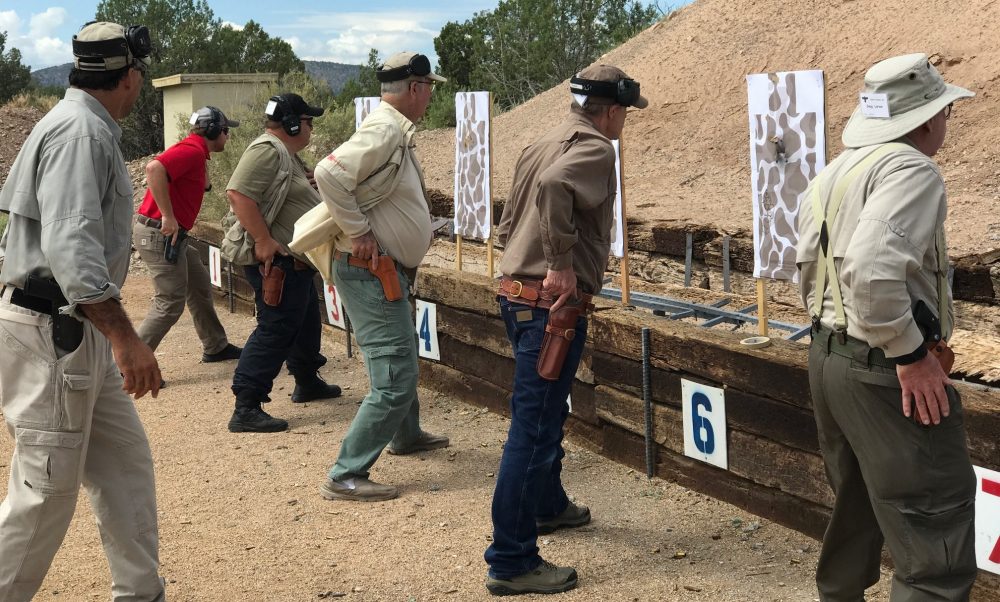
Steve Tarani ran us through some drills that would allow a defender to increase distance and get off the line of attack. The three key steps are distance, movement, and positioning. First, we took a large step to the rear to gain distance from the threat and end up in a stable shooting stance while drawing, then we fired two rounds center mass to the target.This was followed by taking a large step diagonally to the rear, which increased distance while simultaneously changing our position and getting us off the line of attack.
Getting off two quick shots with a single-action is a matter of technique. Rather than try to cock the revolver with the strong-hand thumb, instead maintain a firing grip and cock it with the weak-hand thumb. I’m not one of them, but I’ve seen a few shooters who could fire two shots that rivaled the speed of a semi-auto.
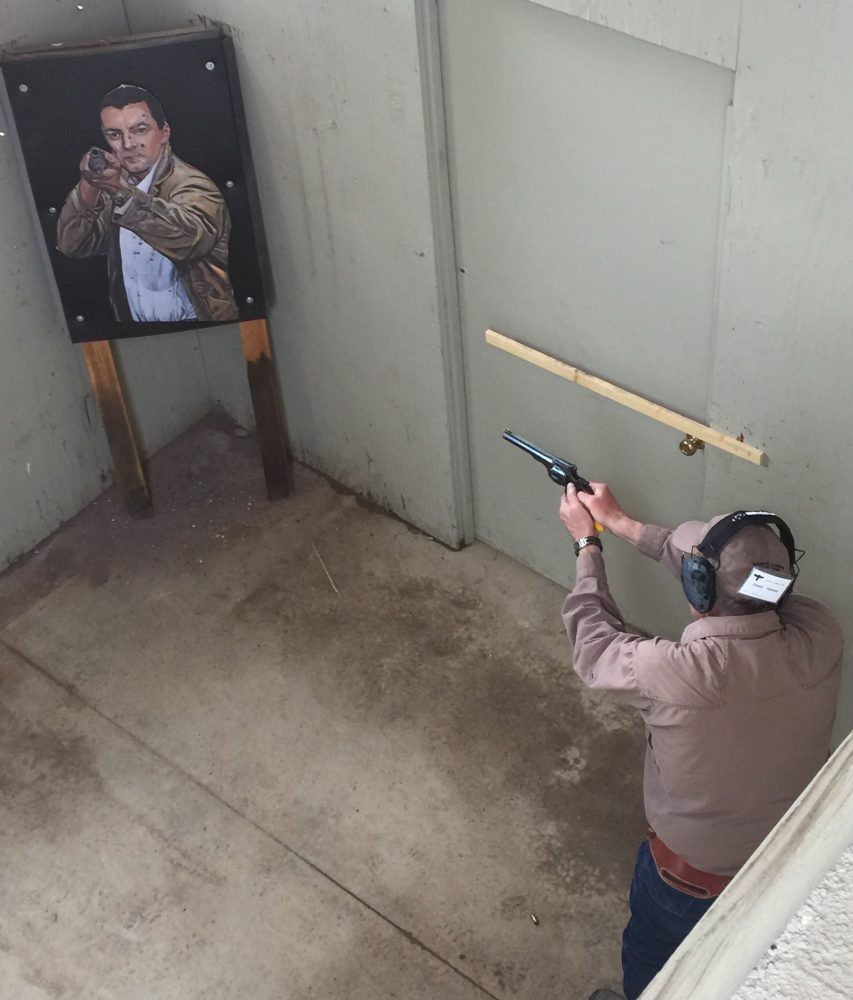
Going through a Gunsite shoot house with the Schofield compared to an auto-loader was interesting, to say the least.Fire two shots from a modern pistol and you still have 13 or more on tap. With a revolver, you have expended a full third of your onboard ammo capacity, so ammo management is critical. The revolver must be topped off after every engagement before proceeding to the next room.
More challenging? Sure, but also a heck of a lot of fun.
SUMMARY
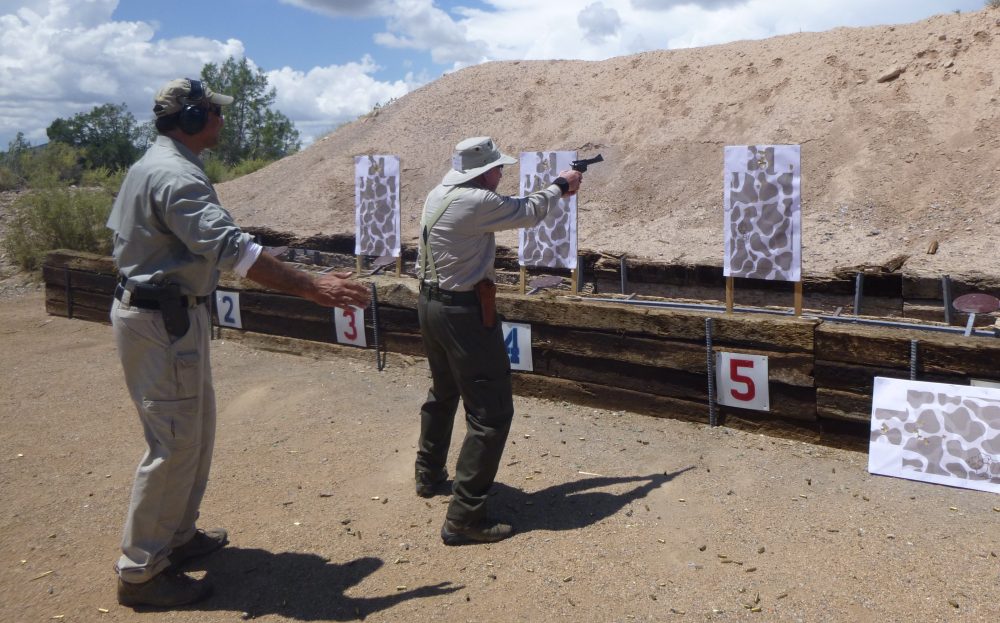
Let’s be honest. For a variety of reasons, we don’t always have our preferred everyday carry gear with us. What might be to hand at the moment of need could be a double-action, or in some cases even a single-action, revolver.In a crisis, along with a fighting mindset, you need to be proficient with whatever type of arms you may be carrying. This event helped the attendees do just that.
SOURCES:
GUNSITE
(928) 636-4565
www.gunsite.com
BLACK HILLS AMMUNITION
(605) 348-5150
www.black-hills.com
RAVEN CONCEALMENT SYSTEMS
www.rcsgear.com
ROSS LEATHER
(941) 739-1030
www.rossleather.com
SIMPLY RUGGED HOLSTERS
(928) 227-0432
www.simplyrugged.com
STI
(512) 819-0656
www.stiguns.com
STURM, RUGER & CO, LTD.
(203) 259-7843
www.ruger.com

